Robotics in Construction
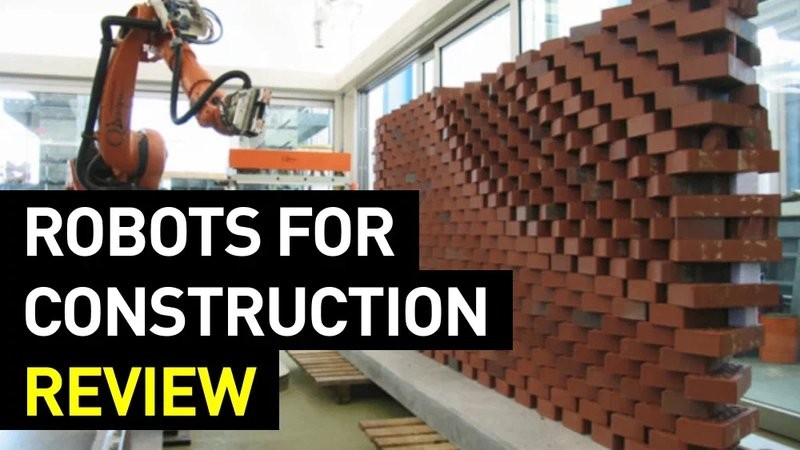
Hi everyone! This is Top 3D Shop, and in this in-depth article, we will tell you about the use of robotics in the construction of buildings and structures.
The technological changes that are expected to revolutionize this industry are mobile “construction robots”, which can efficiently lay bricks, and mobile 3D printers responding to environmental changes. In nearly every case, AI-based technologies are able to complete their tasks faster, safer, and more effectively than their human counterparts. Read on to find out more.
Robotization and BIM
During the construction process, there often occur difficulties associated with inaccurate calculations in the design of a construction object, imperfect communication with contractors, the notorious human factor, etc. So how can robotization help avoid all these problems and speed up the design process, bringing it to a new quality level?

Robot manipulator at a construction site
Credit: robotics.org
For this, there is a special BIM technology — Building Information Modeling. This approach to the construction, equipment, maintenance, and renovation of a building involves the collection and complex processing of all architectural, design, technological, economic, and other information about the building with all its interconnections and dependencies, when the building and everything that relates to it is considered as a single object. That is, a three-dimensional model of the building is developed during the design process, associated with an information database, in which additional attributes can be assigned to each element of the model.
The peculiarity of this approach lies in the fact that the building object is basically designed as a whole. And a change in any one of its parameters entails an automatic change in the remaining parameters and objects associated with it, up to drawings, visualizations, specifications, and a schedule.
BIM has distinct advantages in the design process, which include:
- simplifying the tasks of architects and engineers, increasing their productivity;
- speeding up data exchange;
- saving time and effort;
- reducing the number of documents and official permits;
- improving the validation and modification cycle.
However, as practice shows, an accurate BIM model does not mean it will be accurately built. The reason for that is the reliance on manual operations. In spite of professionalism, errors tend to arise.
These technical errors occur regardless of the simplicity of the design. For example, if the column has been placed a few centimeters away from the intended position, the coordinates of the beams and other structural elements should be revised and relocated. In this case, the contractor sends a technical report to the project manager with a description of the errors, who, in turn, will ask for an immediate meeting with the development teams for an urgent solution.
The team decides whether to redo a particular column or change the entire design in accordance with the error. Both solutions take a while, leading to delays in the project construction schedule and additional costs.
So, the problem lies in the lack of integration between BIM and contractors. Precast structural elements may not be installed correctly if old construction methods were used. Therefore, technology must be effectively deployed to accurately communicate the technical data of the models. That’s when robotics will be of particular use.
Robots are used in plenty of industries to improve their productivity and efficiency. But there are still not many of them in construction. A business that employs robots will definitely have great benefits in the construction process. Here are the main advantages robots provide:
- reduce errors and redesigns;
- double the installation accuracy and carefully build the model;
- save time and help follow an efficient schedule;
- manage the construction process and reduce waste;
- robots will be able to produce complex geometric shapes that were previously impossible to construct.
Examples of using robots with BIM technology
Swinerton Builder is the first company to use Tekla Structures/LM80 software and integrate it with a portable program.

Tekla Structure BIM, the Waikiki Plaza construction project in Honolulu
Creit: www.arch2o.com
The Trimble LM80 software is capable of accurately transferring data from Tekla Structure Layout Manager to Trimble Robotic Stations, setting the coordinates of structural elements on the website.
With this connection, specialists get accurate and coordinated information on the ground. Prior to the integration between Tekla Structures and the Trimble LM80 software, a lot of time was spent in the office developing adequate back-validated measurement schemes.


Credit: arch2o.com
Through its virtual design and construction initiative, Swinerton has become a national leader in BIM and (3D) modeling, assessment, and planning. The company has applied this technology to 162 projects totaling more than 49.9 million square feet and over $11 billion.
The tallest building in Southeast Asia — the skyscraper Landmark 81, located in central Ho Chi Minh City, Vietnam — was also built using BIM technology.
“Our transition to BIM in 2015 and the implementation of Tekla solutions have been instrumental in building our customers' confidence in large, complex projects,” said Ho Van Thao, Project Director at Coteccons, the main contractor for the skyscraper.

Credit: arch2o.com
It was this company that became the first local contractor to have a project of this magnitude. More than that, it was completed 45 days ahead of schedule.
Types of construction robots
There are several types of construction robots poised to enter the market on a massive scale. First, it is 3D printing robots that can construct large buildings on demand. A mobile robotic arm controls a 3D printer, and using a set of preprogrammed instructions, this system 3D prints an entire structurally safe building.
This technology is also beginning to be used for the construction of bridges. The Netherlands, the United States, and China lead the way in the implementation of 3D printing technology for bridge construction.
The world's first 3D printed bridge opened in the Netherlands in the fall of 2017. The bridge is designed for motorcycles or bicycles, but it can also withstand the weight of forty trucks.
“One of the advantages of printing a bridge is that much less concrete is needed than in conventional technique in which a mold is filled, A printer deposits a concrete only where it is needed,” says a spokesman for the Eindhoven University of Technology.
The eight-meter bridge connects two roads above a small stream in the town of Gemert and is made of pre-compressed reinforced concrete. It is said to consist of about 800 printed layers, being assembled on site. The structure was created using arc welding technology. In fact, it was erected by a special robot with a welding machine.
The successful combination of 3D printing and industrial robots is one of the most promising automation technologies in the construction industry.
Engineers show how Universal robots can be used in the construction industry

Credit: Construction Robotics
The Autodesk laboratory (San Francisco, USA) presented research projects aimed at studying the automation of the construction industry. Products by Universal Robots assisted the engineers in the research.
The researchers covered different ways of developing human-robot interaction, as well as methods of controlling and coordinating the actions of machines. Also, the laboratory presented robots with different scenarios of machine learning: from robotic artists to mechanisms that can design complex objects and carry out repair work.
Bricklaying robots

Bricklaying robots are already successfully replacing builders on hundreds of UK construction sites. These machines are capable of laying six times as many bricks as construction workers in a day — and never need a break. Bricklaying robots significantly improve the speed and quality of construction work.
Example
New York-based company Construction Robotics has developed a robot called SAM (Semi-Automated Mason) that can stack 3,000 bricks per day. This is by far more than most human builders are capable of, who can lay an average of 500 bricks a day. The SAM100 is the first commercially available masonry robot for on-site construction.
Australian company Fastbrick Robotics has also developed a concept commercial bricklaying machine called Hadrian X.
Thanks to the automated design of the house structure, the Hadrian X robotic bricklayer is able to handle the automatic loading, cutting, and stacking of all bricks to create a solid structure.
Construction 3D printers
Construction 3D printing can be used in the private, commercial, industrial, and government sectors. Potential benefits of these technologies include faster construction, lower labor costs, increased complexity and accuracy, greater integration of functions, and less waste generated during the construction process.
There are different 3D printing methods used in construction, including:
- extrusion (concrete/cement, foam, polymers);
- powder compound (polymer compound, chemical compound, sintering);
- additive welding.
3D printing in the construction industry saves time, effort, and materials compared to traditional construction methods.
Example
American startup ICON and charity New Story presented fast 3D printing of residential buildings.
The developers said it took the construction printer 12 to 24 hours to print a simple 60-square-meter one-story house. The maximum building area that the printer can cope with is 80 square meters.
ICON representatives noted that this technology is notable for its low cost. One house at this stage of development will cost $10,000, but in the future, startups promise a reduction to 4 thousand dollars.

Credit: iconbuild.com
After the walls are printed, builders install windows, a timber roof, basic plumbing, and electrical wiring that can be run inside the walls. The entire installation, including finishing, takes less than a day. In the future, ICON plans to create robots that will install windows and roofs after printing and drones that can paint the premises.
The company also introduced the Vulcan printer, which can be carried from place to place, despite its high weight. The Vulcan prints a regular mix of concrete that is laid in 100 inch thick threads and retains its shape as it hardens. The walls continue to harden for several days after printing, but one can start living in the house as soon as it’s built.
The companies hope to commercialize their technology inside the US, where housing shortages in some cities are even worse than in developing countries.
As an experiment, ICON and New Story will build 100 houses in El Salvador, the most populous country in Central America. The company's portfolio already includes several completed buildings in Bolivia and Haiti. The first house was printed in Austin, the hometown of the developers.
When robots and 3D printers work together
3D printing has the potential to revolutionize the way people make and create objects, from tiny to huge. By combining robots with 3D printers, partner company KUKA Branch Technology, along with architects at the Gould Turner Group, is fundamentally changing the way architects and designers not only create the final structure, but also how that structure is designed from start to finish.
The video shows architects using composite materials (ABS pellets reinforced with carbon fiber) to 3D print heavy-duty scaffolding that can also use traditional building materials. The results are not only visually impressive, but also very practical, like many natural tree structures.

Credit: kuka.com
This technology creates the complexity of the honeycomb structure, which uses economical building materials to provide the functionality and strength of the wall structure. Composite structures are created using the same methodology that nature builds with. Like bones in our body or trees in a forest, optimized geometry is made strong and functional thanks to the material that fills the matrix. Interior and exterior skins can then be processed in any way.
Cellular Manufacturing makes use of 3D Technology's patented free-form printing process. Free-form printing in open space is not limited to the slow, layering process of traditional 3D printing. The company's algorithm creates both geometry and robotic motion to construct complex geometries in open space without the use of auxiliary materials or tightly controlled building conditions.

FANUC robots improve efficiency in building materials production

Credit: fanucamerica.com
FANUC Robotics aims to improve the efficiency of building materials production using robotic systems. Using robots to cut, stack, and palletize building materials increases efficiency as robotic systems can complete tasks faster and more precisely. The machines by FANUC Robotics can manipulate fiberglass and foam insulation as well as various cladding materials to meet each customer's order. Besides, they can do all of that really fast.
For example, the FANUC Robotics system can cut, box, and pallet 42 meters of polyisocyanurate board insulation per minute. As for various lamination methods, it is even faster — up to 67 meters per minute. Companies that integrate robots into their workflow are becoming more efficient and competitive.
Robots for carrying and installing sheet materials

Such human-controlled robots are designed to lift and place large glass panels, sandwich panels, metal sheets, and other building elements, especially those of considerable value and size. These devices are used where it is inconvenient to employ traditional ones — cranes or hoists.
Example
The leader of this market segment is GGR Group, UK. Among their products are such machines as the Geko PV+ robot and the "heavyweight" Oscar 1000 capable of lifting loads of up to one ton.
The Geko PV is a vacuum robotic lifter with powerful devices for gripping of materials. It can hold flat and bulky objects both vertically and horizontally, with the ability to rotate them up to 180 degrees. The machine is designed for indoor use; it can hold up to 175 kg, with the lifting capability of up to 3 m. The battery capacity is enough for 8 hours of work without recharging.
Robotic cranes

A new technique for the automatic erection of steel structures in high-rise buildings is called the RCA system (Robotic Cognitive Automation). The RCA can be divided into four separate sub-systems:
- Control and monitoring system;
- Material assembly system;
- Beam assembly system;
- Facility construction system.
The use of robotic cranes improves construction efficiency and alleviates labor shortages.
The GGR Group is ranked #1 for lifting solutions in construction.
Example

Credit: ggrgroup.com
The MCC 804 mini crawler crane features high lifting capacity and is capable of reaching the height of a mini spider crane. Indeed, this 8 tonne crane can reach a maximum working height of 13.7 meters using a four-section telescopic boom that can be precisely adjusted with a joystick.
According to GGR Group CEO Graeme Riley, companies across Europe are significantly expanding their fleet of robotic/spider cranes. The demand for these specialized mini cranes for lifting in the most compact and challenging conditions seems to have never been greater.
Kuka robots for wood construction

Credit: roboticsandautomationnews.com
The Kuka KR Quantec robot helped build a new research pavilion at the University of Stuttgart by literally stitching the pieces together. For the first time, the Institute for Computational Design (ICD) and the Institute of Building Structures and Structural Design (ITKE) used industrial sewing technologies for wood construction.
The industrial robot produced a total of 151 different segments with bending radii from 30 to 75 cm. This lightweight structure weighs 780 kg, has a length of 9.3 m, and covers a total area of 85 m².

Research pavilion at the University of Stuttgart
Credit: ICD / ITKE, University of Stuttgart
Overall, this new research pavilion demonstrates how the interaction between material, shape, space, load-bearing structure, and robotic manufacturing can lead to innovative timber structures.
Demolition robots
Demolition robots, although slower than human crews, are much safer and less expensive when it comes to demolishing concrete and structural elements of a building at the end of its life cycle.
These mobile robots use a variety of tools such as crushers and buckets to break up building materials. Most demolition robots resemble small excavators, only without a cab.
Currently, such machines account for 90% of the total construction robot market. They are among the first commercially viable construction robots to tackle applications in a historically labor intensive industry.
This automation is all about safety and efficiency that provide significant cost savings for builders and companies. Demolition is a dangerous job.
Robotic automation saves people from danger and allows them to perform more productive tasks. Also, demolition robots do not need breaks and can work day and night to complete the work faster than ever before. While such devices have a high initial cost, which is to be expected from a new technology, they prove cost-effective in the long run, providing a good return on investment and greatly saving labor.
Drones in construction
The use of drones in construction is a new technology with great potential. Along with 3D printing and robots, this is going to revolutionize the architecture and construction industry.
Quadcopters are used to collect geodetic information about the territory, to control work and create marketing materials. Equipped with high-definition cameras, infrared scanners, and thermal sensors, drones collect important data that can affect the project even during the design phase. Apart from that, they can paint, clean hard-to-reach places, and deliver certain loads.
Example
The American company Apellix presented the Worker Bee automated painting system, which uses a quadcopter to spray paint. Simply place the drone next to the object to be painted and press the START button on the user interface. The on-board computer performs all the rest of the work, including flight control and testing before returning to a safe area for further instructions.

Bottom line
Traditional construction methods generate excessive amounts of waste, which is not only harmful to the environment, but also significantly affects profitability. Robotization can help reduce that waste due to its ability to provide high precision and accuracy.
Investing in high tech such as 3D printing and robotics can be challenging for many businesses, but eventually, the reduction of waste and material use is certain to have a positive impact on profitability. More than that, such equipment significantly increases competitiveness by virtue of an increase in the quality and speed of work.
Robots in the construction industry are and will be applied in a great many ways — from training future specialists for working with construction robotics (for instance, with uArm robots by UFACTORY) to the creation of manifold complex objects, covering an array of operations.
Robotization successfully displaces heavy physical labor from both main and auxiliary processes and can significantly reduce the time and cost of construction.
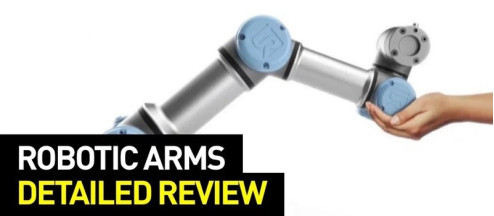

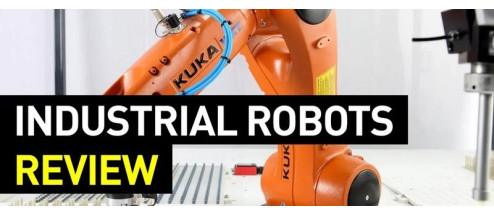

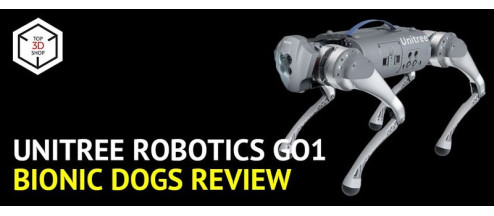


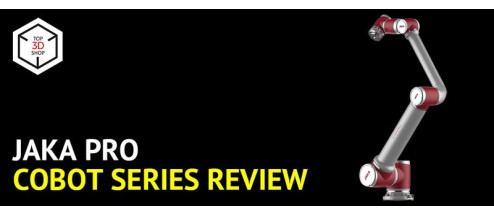
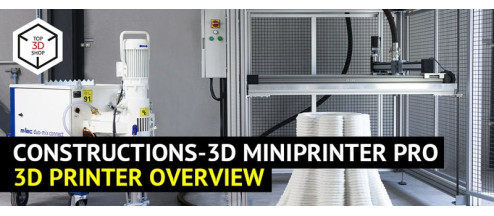
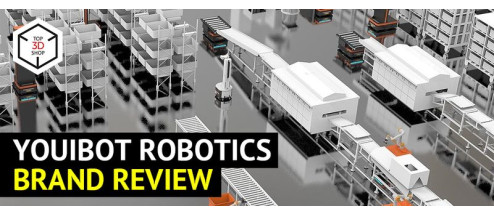

Write a comment